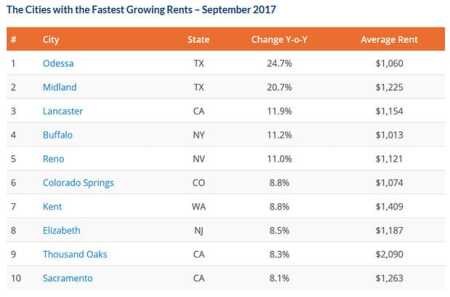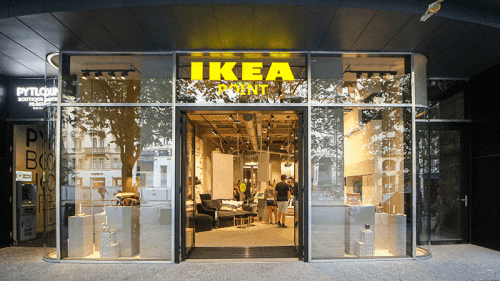National rents have barely moved through the entire peak rental season and into September, according to data from Yardi Matrix, marking the longest period of stagnation in recent history—four consecutive months. Coming in at $1,354 for the month of September, the average rent is only 2.2 percent higher than this time last year.
Though nationally and in the most expensive cities for renters prices have finally come to a full stop, there are still some holdouts—and it seems that renters in smaller and midsized cities are not yet getting a break, on the contrary.
Though smaller and midsized towns used to be a haven for renters looking to avoid the sky-high prices of large urban areas, it seems those days are in the past. September’s list of fastest-growing rents is dominated by small and medium-sized towns—many boasting double-digit growth since this time last year.
The Lone Star State’s Odessa and Midland—both hubs of oil and gas activity—came in at the top two spots, with jumps of 24.7 percent and 20.7 percent, respectively. Odessa rents now clock in at $1,060 per month, while Midland’s reach even higher, coming in at $1,225.
The rest of the nation’s fastest-growing rents can be found largely on the West Coast, with California, Washington, Nevada, and Colorado taking up the remaining bulk of the list. The only northeastern cities to see big year-over-year rent growth were Buffalo, New York, with an 11.2 percent jump over 2016, and Elizabeth, New Jersey, which saw rents climb 8.5 percent to $1,187.
One- and two-bedroom apartment units are seeing rents grow much faster than their larger and smaller counterparts. In fact, two-bedroom-unit rents have jumped 2.8 percent in the last year, while studio apartments have risen just 1.9 percent. Coming in at $1,329 per month, rents on two-bedroom units actually dipped since August, but still clock in with the highest year-over-year growth rate out of all apartment sizes.
Three-bedroom units have posted rent growth of 2.4 percent since last year, hitting $1,555 per month in September—a 0.1 percent drop since August. Studio apartments, which average $1,190 now, rose 0.1 percent over the month, while one-bedroom units ($1,162) flat-lined over August.






